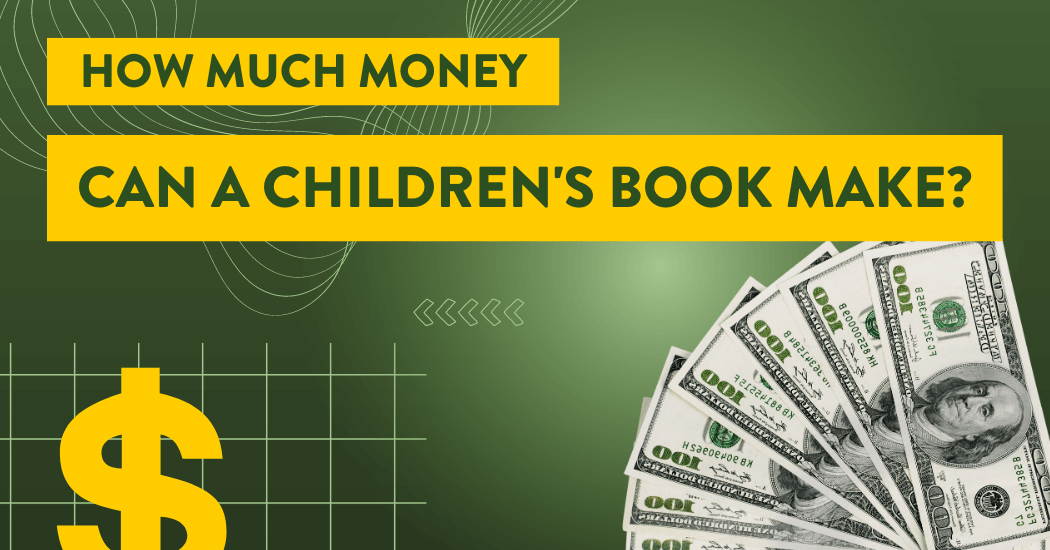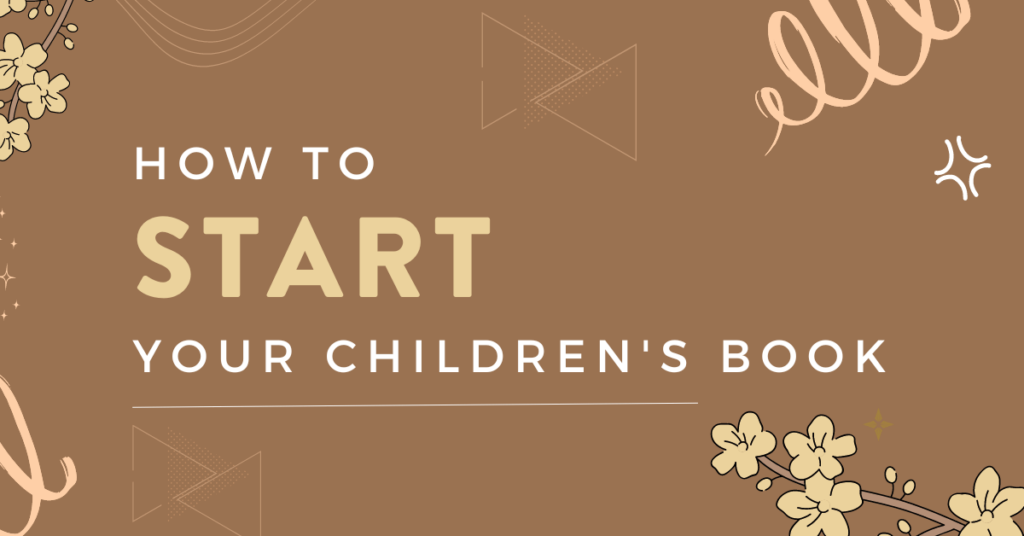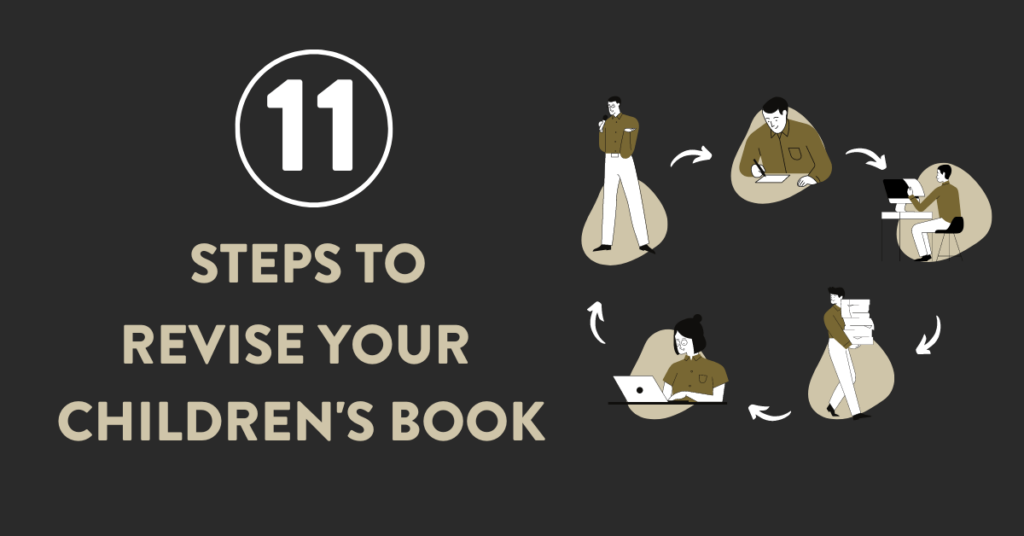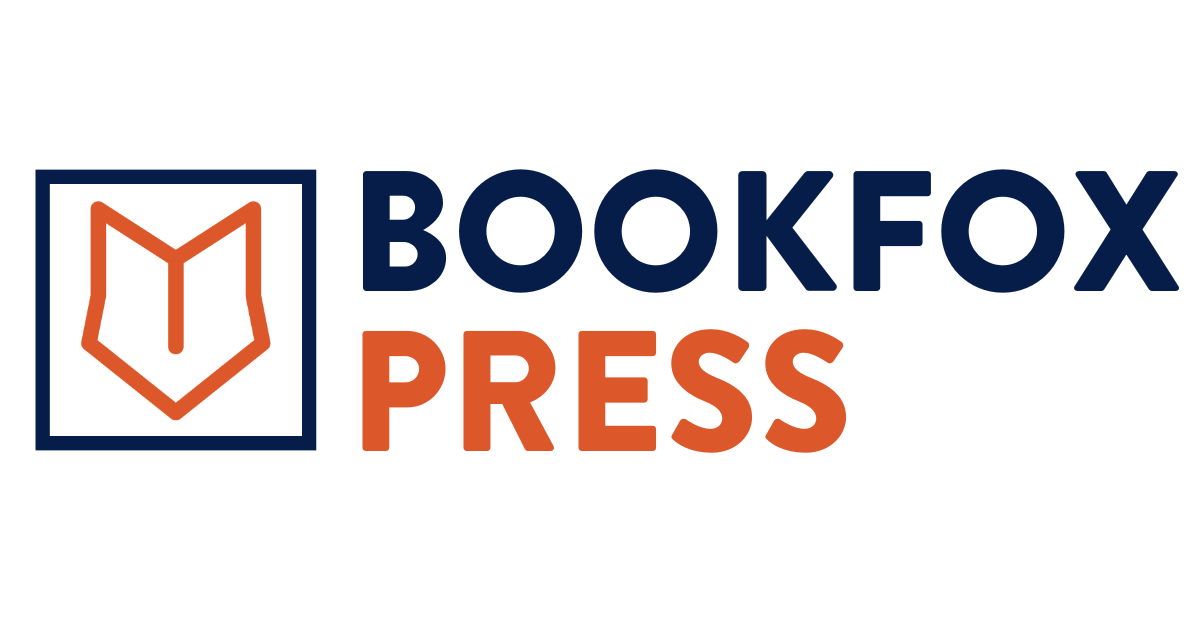
As an editor of children’s books, I’ve had the privilege of working with thousands of authors, each with a unique story, vision, and journey.
Of course, not all authors are doing this only because of an artistic impulse. They also want to make $$$$.
I can’t blame them. Writing a children’s book is a big investment, and it would be nice if book sales recouped some of that investment.
It’s difficult to know:
- where to spend money (on editing? on better illustrations? on advertising?)
- how much money to invest (will more money make a better book? It will, up to a point)
One of the most common questions I get asked is, “How much money can you make with a children’s book?”
Today, I’m drawing from my experiences with five of my clients to answer this question. Let’s dive in.
Case Study 1: The Bestseller
110,000 Copies Sold
For the sake of privacy issues, I’m not going to list the titles. That’s because it would be embarrassing for the lowest person on this list to reveal the small amounts of copies they’ve sold, but also because I’m not sure the bestsellers will want me spilling the beans on all their financial inner workings.
So you’re just going to have to trust me, but I think after you read the details you’ll know that these are actual people and actual books I’ve worked with (I’ve edited more than a 1,000 children’s books in the last decades, so I had plenty to choose from).
This is the most successful author I’ve worked with in terms of sales, and it wasn’t a traditional published author, but a self published author.
Expenses:
- Illustration & Design: $9,000
- Editing: $1000
- Website: $6000
- Advertising & Marketing: $130,000
- Total Expenses: $146,000
Revenue:
- Retail Price: $14.99
- Author’s Royalty per Copy: $4.50
- Total Revenue: $495,000
Net Profit: $203,000
Details:
What made this book a success was an incredible advertising plan — the bulk of their sales came through a steady drip from advertising on Facebook. They spent an enormous amount of time over a year and a half perfecting and altering the advertising plan, so you have invest your time as well as your money (it was like a part-time job).
However, this strategy fell apart when Facebook algorithms changed, and they started to spend more on advertising for every book that they sold.
This was this author’s first book — they weren’t an established author. But their background in advertising helped them launch this book to the stratosphere.
It helped that they had an extremely high concept book that grabbed the attention of people online. If they didn’t have an extremely unique, and of-the-moment trendy concept, then their advertising campaign wouldn’t have worked.
They also had a fantastic online presence, including a website for their book that was beautiful and convincing. The sales tactics on their website was the best I’ve ever seen for a children’s book, including lots of video and text testimonials, as well as a plea to support the book because of the positive message of inclusion and diversity.
Case Study 2: The Mid-Tier
25,000 Copies Sold
Selling 25,000 copies is truly a rarity in the world of children’s books. I called this a Mid-Tier, but don’t be fooled — this is tough to pull off. You are definitely in the top 1% of book sales if you hit these kind of numbers.
Here’s a breakdown of expenses that the author shared with me (I knew the editorial costs already because I was the editor, of course!).
Expenses:
- Illustration & Design: $5,500
- Editing: $1,000
- Marketing & Promotion: $15,000
- Total Expenses: $26,000
Revenue:
- Retail Price: $12.99
- Author’s Royalty per Copy: $3.90
- Total Revenue: $97,500
Net Profit: $71,500
Details: What made this a success was the author got featured on a prominent morning show. This spiked their sales, which spiked their review numbers, and then the algorithm of Amazon took over and they had a long tail of steady, but diminishing sales.
They got features on the morning show for a few reasons.
- They hired a publicist who reached out to a bunch of media connections. The morning show wasn’t the only one who picked them up, but it made the biggest different in terms of sales.
- They had a very, very, very trendy topic. Some of this was luck, or maybe it was skill. They simply picked a topic that a lot of people were talking about, and that made a huge difference. Most of my children’s book authors I work with pick reliable, perennial topics, like kindness and bullying, but those don’t make a media splash. If you pick a topic that’s in the news, your book has the potential to blow up.
After the morning show, they travelled around for a few months visiting schools and giving a talk based on their book. This also helped with a steady drip of sales.
If you want more financial information, check out my post on the price of self-publishing a children’s book.
Case Study 3: The Humble Success
3,000 Copies Sold
This was a traditionally published book. I did developmental editing for it, and it got picked up by a mid-sized Canadian press. It also won a prominent award, which helped a little bit with sales, but not as much as they’d expected. Still, it made them feel good.
I’d like to point out there’s not necessarily a quality difference between self published books and traditionally published books. And traditionally published books don’t necessarily sell more, although certainly having the marketing engine of a publisher can help. It’s really up to your promotional skills to determine how well a book sells (as well as luck).
Expenses:
- Editing: $1,000
- Marketing & Promotion: $2,000
- Total Expenses: $3,000
Revenue:
- Author’s Advance: $10,000
- Royalties: none yet because the book hasn’t earned out
- Total Revenue: $10,000
Net Profit: $7,000
Details: Because this was a book set in the location where the author lived, the author focused mainly on local promotions. The heartwarming story and beautiful illustrations made it a favorite in the local community.
This author relied on word of mouth, school visits, and local bookstore promotions. They really hit the pavement and did lots of events in person.
They also won an award. It wasn’t a huge award, but winning even a small award helps with marketing. Customers are more likely to buy a book when it has an award sticker on it.
Their expenses were kept to a minimum because the publisher took on the cost of illustrations. I don’t know the specific amount the publisher spent, but judging by the expertise of the illustrator, I would guess would be between $12,000 – $17,000.
Perhaps I’m wrong, since I do have a friend who gets paid $30,000 per book for illustrations, but that’s at one of the big five publishers, and this was a smaller press, who usually pay illustrators less.
The illustrator also had a marketing liaison who helped coordinate some events, which the author did not pay for.
Case Study 4: The Passion Project
500 Copies Sold
This one was a board book — thick pages, an initial print run rather than a print-on-demand like most other books.
That’s because Amazon doesn’t do board books, and they had to contract out to a separate printer. If you need help with your board book, contact Bookfox Press, because we have relationships with several printers and can make the process easy for you.
Expenses:
- Illustration & Design: $1,500
- Editing: $500
- Printing (initial run): $6,000
- Marketing & Promotion: $1,500
- Total Expenses: $9,500
Revenue:
- Retail Price: $9.99
- Author’s Royalty per Copy: $5.00
- Total Revenue: $2,500
Net Profit: -$7,000
Details: The author of this book was a middled-aged man who wanted to wanted to teach young children a particular subject. He was a public figure and knew a bunch of famous people, because he coached them in a sport.
For him, it wasn’t exactly about the money, so the loss didn’t upset him. He wanted the publicity of having written a book, which would help him get clients in his field. It was another notch to his resume which bolstered his credibility.
I doubt this author will write a second book — at least, he hasn’t brought it up to me yet. Instead, I think he was a one-time author who feels proud of what he created, and feels satisfied that he’s helped introduce a lot of children to a sport they probably hadn’t considered before.
Also, although he lost $7,000 dollars, he still has about 500 unsold copies, so he still could earn a bit more. In the end, I think he might have “earned” money based on the publicity this book got him and how it helped him in his career.
Case Study 5: The First-Timer
25 Copies Sold
So the sales of this picture book were pretty disappointing, I won’t lie. But actually, a lot of self published books end up in this category.
That’s because writers are fundamentally creative people, and creative people don’t necessarily have the marketing skills to put off an amazing marketing and promotion campaign. Unfortunately, if you want to make money on your book, marketing is the most important skill you can have.
Expenses:
- Illustration & Design: $1000
- Formatting: $100
- Editing: $0
- Marketing & Promotion: $0
- Total Expenses: $1,100
Revenue:
- Retail Price: $8.99
- Author’s Royalty per Copy: $2.70
- Total Revenue: $54
Net Profit: -$1,046
Details: As a first-time author, the journey was more about learning and experiencing the process. And in the end, they lost money, but it didn’t matter to them because they felt satisfied with publishing a book. Plus, their grandkids loved the book, which made it truly emotionally satisfying for them.
I’ll also say that the limited sales didn’t deter the author, who is now working on their second book.
As far as what to learn from this case study, this person started marketing and promotion after they published it (that’s the first mistake). Ideally, you want to start building a marketing engine for your book about 3 – 4 months before you publish your book.
I also didn’t think the illustrations were very good. $1000 is pretty much the lowest amount you could ever pay a children’s book illustrator, and the lack of quality showed. It’s tough to get people to buy your book when the cover art is mediocre.
This person also did not get developmental editing for their children’s book. They were on my email list and had read all my emails and blog posts, but they didn’t pay for editing. They contacted me, we exchanged emails several times, and after the process was finished they sent me the book as a thank you, but I was never able to work with them to help them improve their book.
It’s tough to know what would have happened, but I’m sure the story would have been better if I’d be able to give him some advice about the plot, characters, and other details.
The final problem was reviews: Even now, there is only 1 review on Amazon of this book. Low reviews prevent other readers from buying your book. If you want sales, you need to get reviews.
Conclusion:
The road to publishing a successful children’s book is varied. While some authors achieve commercial success, others find value in the joy of sharing their stories, regardless of the sales numbers.
As an editor, my advice is to focus on crafting a beautiful and impactful story. The numbers might vary, but the impact on a child’s imagination? Priceless.




One thought on “How Much Money Can You Make with a Children’s Book? (5 Case Studies)”
Awesome information. I concur.